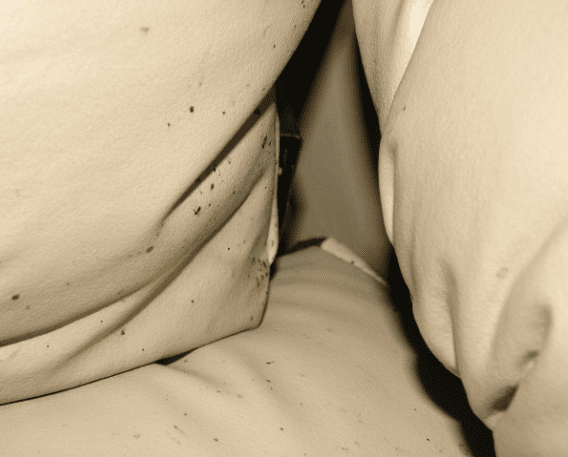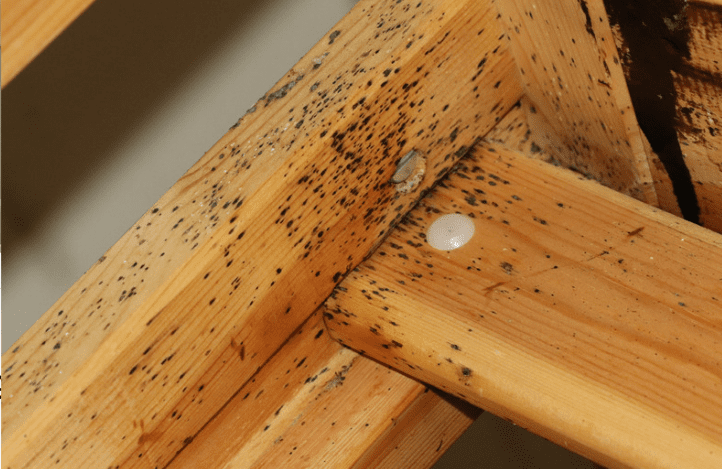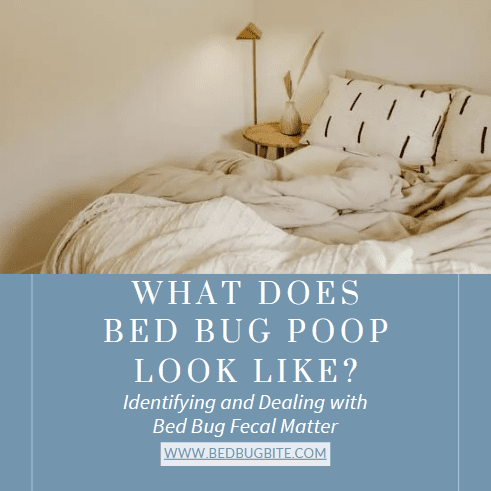Introduction – What Does Bed Bug Poop Look Like?
What Does Bed Bug Poop Look Like? Welcome to Bed Bug Bite, your ultimate source for comprehensive information on dealing with bed bugs. As a seasoned content creator and bed bug knowledge expert with over two decades of experience. I understand the importance of providing you with the most accurate and detailed insights into the world of bed bugs. In this blog post, we delve into a crucial aspect of bed bug infestations – identifying their fecal matter. Early detection is the key to effective bed bug control. And understanding what bed bug poop looks like is a fundamental step in this process.
Throughout this article, we will explore the characteristics of bed bug feces. Offer guidance on distinguishing it from other stains, and explain why recognizing bed bug droppings is paramount. Additionally, we will discuss methods for safely collecting and preserving fecal matter samples. As well as the role of professional inspection in confirming an infestation. Whether you’re a homeowner concerned about a potential bed bug problem or simply seeking to expand your knowledge. “What Does Bed Bug Poop Look Like?” is your trusted resource for valuable insights into this persistent pest issue.
But before we delve into the details, let’s briefly explore the fascinating biology of bed bugs and their feeding habits to understand why their fecal matter is a crucial indicator of their presence.
Understanding Bed Bug Biology
In order to identify bed bug feces accurately, it’s essential to gain insight into the intriguing biology of these tiny pests. Bed bugs, scientifically known as Cimex lectularius, are resilient insects that have adapted remarkably to coexist with humans. Their life cycle consists of distinct stages, including eggs, nymphs, and adults, all of which play a role in the production of fecal matter.
Life Cycle:
Bed bugs go through a gradual metamorphosis, which means they don’t undergo a complete transformation like butterflies or beetles. Instead, they develop through five nymphal stages before reaching adulthood. At each stage, they require a blood meal to molt into the next stage, leaving behind telltale signs of their presence, including feces.
Feeding Habits:
Bed bugs are obligate blood-feeding insects, meaning they exclusively feed on the blood of mammals, with humans being their preferred hosts. These blood meals are essential for their growth and reproduction. As they feed, bed bugs extract blood from their host. Digesting it and excreting waste in the form of fecal matter. This process is integral to understanding the characteristics of bed bug poop and its role in infestation detection.
In the subsequent sections of this article, we will delve deeper into the specifics of what bed bug feces looks like. How to distinguish it from other substances, and why recognizing it is vital for effective bed bug control. Armed with this knowledge, you’ll be better equipped to tackle potential infestations and safeguard your home from these persistent pests.
Characteristics of Bed Bug Fecal Matter
Understanding the distinctive characteristics of bed bug feces is a crucial step in identifying these stealthy invaders. When it comes to detecting a bed bug infestation, knowledge is power, and knowing what to look for can make all the difference. In this section, we’ll delve into the key aspects of bed bug poop that set it apart from other stains.
Appearance – What Does Bed Bug Poop Look Like:

Bed bug feces often appear as small, dark, and ink-like stains on surfaces. They are commonly mistaken for tiny ink droplets or specks of dirt. These droppings are typically dark brown to black in color due to the digested blood content.
Size and Shape:
The size and shape of bed bug feces can vary, but they generally resemble tiny, elongated ovals. They are roughly the size of a pinhead, measuring about 1-2 millimeters in length. Their shape and size are consistent with their tiny bodies.
Texture:
Unlike liquid stains, bed bug feces have a somewhat granular or powdery texture when dry. When crushed, they may leave behind a smeared, rust-colored mark.
Location:
Bed bug feces are most commonly found near their hiding spots and feeding areas. These pests are notorious for hiding in cracks, crevices, seams of mattresses, and furniture. Which is where you are likely to encounter their droppings.
In the subsequent sections, we will explore how to differentiate bed bug feces from other common stains and why recognizing these distinctive characteristics is essential for early detection. By the end of this article, you’ll have a comprehensive understanding of what bed bug poop looks like and how it plays a pivotal role in uncovering an infestation.
Distinguishing Bed Bug Poop from Other Substances
Detecting bed bug fecal matter accurately requires the ability to differentiate it from various other stains and blemishes commonly found in homes. The ability to distinguish these telltale signs from ordinary household stains is essential for prompt identification and effective bed bug control. In this section, we’ll provide valuable insights and tips on how to differentiate bed bug poop from other substances.
Visual Distinction:
One of the primary challenges in identifying bed bug feces is their visual similarity to other dark stains. It’s important to closely examine the characteristics of the stain, including its color, size, and texture.
Color Comparison:
While bed bug feces are typically dark brown to black, other substances like ink, coffee, or even mold can leave similar-looking stains. Pay attention to the specific shade and try to correlate it with your knowledge of the area where the stain is found.
Size and Shape Analysis:
The size and shape of bed bug feces, though tiny, have unique attributes. They often resemble small, elongated ovals, distinct from circular or irregularly shaped stains caused by other substances.
Texture Test:
Gently touch the stain to assess its texture. Bed bug feces tend to have a granular or powdery feel when dry, whereas other stains may feel smoother or more solid.
Location Matters:
The location of the stain can also be a valuable clue. Bed bug feces are typically found near their hiding spots and feeding areas, such as seams of mattresses, baseboards, or upholstered furniture. Stains appearing in these areas should raise suspicion.
In the subsequent sections of this article, we’ll delve deeper into the significance of recognizing bed bug droppings and why accurate identification is critical for effective bed bug management. Armed with this knowledge. You’ll be better prepared to differentiate bed bug feces from other stains that might be encountered in your home.
Why Identifying Bed Bug Fecal Matter is Crucial – What Does Bed Bug Poop Look Like?
Recognizing bed bug fecal matter isn’t merely an exercise in curiosity. It’s a critical step in dealing with a potential infestation. In this section, we will delve into why identifying bed bug poop is paramount in the battle against these elusive pests and the potential health risks associated with their presence.

Confirmation of Infestation:
Bed bug feces serve as tangible evidence of a bed bug infestation. When you can identify their droppings. You can be more confident in confirming the presence of these pests in your home.
Early Detection:
Bed bugs are experts at hiding in cracks and crevices, making them challenging to spot. However, their feces often provide an early indicator of their presence, allowing for prompt action before the infestation worsens.
Preventing a Full-Blown Infestation:
Addressing a bed bug issue in its early stages is significantly easier and less costly than dealing with a full-blown infestation. By identifying fecal matter early, you can take measures to prevent the problem from escalating.
Health Risks:
Beyond the nuisance of itchy bites, bed bugs can pose health risks. Scratching bites can lead to skin infections, and in rare cases, bed bugs have been associated with the transmission of diseases. Timely identification and management can mitigate these risks.
In the following sections, we will explore methods for safely collecting and preserving bed bug fecal matter samples, the role of professional inspection in confirming an infestation, and practical steps for both DIY and professional bed bug management. By the end of this article, you will understand the critical role that identifying bed bug droppings plays in safeguarding your home and well-being.
Methods for Collecting and Preserving Bed Bug Fecal Matter
In your quest to identify bed bug fecal matter accurately, it’s essential to know how to safely collect and preserve samples for analysis. In this section, we’ll provide you with a step-by-step guide to help you gather evidence effectively, whether for DIY identification or to present to a professional for confirmation.
Step-By-Step guide
- Step 1: Gather Supplies: Before you begin, gather the necessary supplies, including disposable gloves, a plastic baggie, a piece of white paper or a cotton swab, and adhesive tape.
- Step 2: Put on Gloves: Always wear disposable gloves when handling potential bed bug feces to prevent contamination.
- Step 3: Locate the Suspected Fecal Matter: Carefully inspect the area where you suspect bed bug droppings are present. Look for small, dark stains that match the characteristics we discussed earlier.
- Step 4: Collect the Sample. Using a piece of white paper or a cotton swab, gently collect a small sample of the suspected feces. Be cautious not to smear or damage it.
- Step 5: Secure the Sample: Place the collected sample in a plastic baggie and seal it tightly. This prevents contamination and preserves the evidence.
- Step 6: Document the Location: Make a note of where you found the sample. This information will be valuable for further analysis.
- Step 7: Use Adhesive Tape: If the feces are on a surface that’s difficult to collect from directly, such as fabric or upholstery, you can use adhesive tape. Press the tape onto the stain, then carefully peel it off and place it in the plastic baggie.
- Step 8: Label and Date: Don’t forget to label the baggie with the date and location of the sample. This helps in tracking and documenting the evidence.
By following these steps
You can safely collect and preserve bed bug fecal matter samples, providing a clear picture of the potential infestation. Whether you choose to analyze the evidence yourself or seek professional assistance, having well-preserved samples is essential for accurate identification and effective bed bug management. In the subsequent sections, we will explore the role of professional inspection in confirming an infestation and provide insights into DIY and professional bed bug management.
Professional Inspection and Testing
When it comes to confirming the presence of bed bugs and their fecal matter, consulting a professional bed bug exterminator is often the wisest course of action. In this section, we’ll guide you through the crucial steps involved in professional inspection and testing, helping you understand why this expertise is invaluable in the battle against bed bugs.
Expertise of Certified Professionals:
Professional bed bug exterminators undergo rigorous training and certification to become experts in their field. They possess the knowledge and experience to identify bed bug fecal matter accurately.
Comprehensive Inspection:
Professional inspections involve a thorough examination of your home, focusing on areas known to be bed bug hiding spots. They will inspect bedding, furniture, cracks, and crevices to locate fecal matter and other signs of infestation.
Use of Specialized Equipment:
Bed bug exterminators often use specialized tools and equipment such as flashlights, magnifying glasses, and even bed bug-sniffing dogs to pinpoint infestations and fecal matter.
Sample Analysis:
If fecal matter is discovered during the inspection, professionals may collect samples for laboratory analysis. This step ensures precise identification, confirming the presence of bed bugs.
Customized Treatment Plans:
Once the infestation is confirmed, professionals can develop customized treatment plans tailored to your specific situation. Their expertise allows for more effective and targeted solutions.
By relying on the expertise of certified professionals, you can gain peace of mind knowing that the presence of bed bug fecal matter is accurately identified, and appropriate measures are taken. In the following sections, we will explore the steps you can take for DIY bed bug management and provide insights into addressing a bed bug issue if you choose to do so independently. However, it’s essential to understand that professional assistance can be invaluable in ensuring complete and lasting bed bug control.
DIY Bed Bug Management
Taking proactive measures to address a potential bed bug infestation can be an empowering and cost-effective approach, especially in the early stages. In this section, we’ll provide you with practical steps for DIY bed bug management, emphasizing the importance of thorough cleaning, vacuuming, and vigilant monitoring.
Thorough Cleaning and Decluttering:
The first step in DIY bed bug management is to declutter and thoroughly clean your living space. Remove any unnecessary items and vacuum every corner, paying special attention to cracks and crevices where bed bugs may hide. Dispose of vacuum cleaner bags in sealed plastic bags to prevent any potential escape.
Wash and Dry Bedding and Clothing:
Bed bugs are often found in and around bedding. Launder your sheets, pillowcases, and clothing at high temperatures, ideally above 120°F (49°C) to kill bed bugs and their eggs. Dry them on the hottest setting possible.
Seal and Encase Mattresses and Box Springs:
Invest in mattress and box spring encasements designed to trap and isolate bed bugs. These protective covers prevent bed bugs from accessing or escaping from these primary hiding spots.
Use Bed Bug Interceptors:
Bed bug interceptors are small devices that trap bed bugs as they try to climb up furniture legs. Placing these under the legs of your bed and furniture can help monitor and capture bed bugs.
Regular Monitoring and Inspection:
Keep a vigilant eye on your living spaces for any signs of bed bugs. Continue to inspect bedding, furniture seams, and other potential hiding spots regularly. Early detection can prevent a minor infestation from escalating.
While these DIY measures can help address a minor bed bug problem, it’s important to acknowledge that severe infestations may require professional intervention. If your efforts are not yielding results or the infestation persists, it’s advisable to consult a certified bed bug exterminator for a more comprehensive and effective solution. In the final section of this article, we’ll provide additional insights into professional bed bug management options for those situations where expert assistance is needed.
Conclusion
In the world of pest control, knowledge truly is power, and this comprehensive guide has equipped you with the essential knowledge needed to identify bed bug fecal matter accurately. We’ve covered everything from the distinct characteristics of bed bug poop to the importance of early detection and the significance of consulting professional exterminators. Armed with this information, you are better prepared to protect your home and loved ones from these persistent pests.
Additional Resources
We understand that tackling a bed bug infestation can be a daunting task, and sometimes, professional assistance is the best course of action. If you suspect a bed bug problem or need further guidance, consider these additional resources:
1. Environmental Protection Agency (EPA) Bed Bug Information: The EPA offers comprehensive information on bed bugs, including prevention and treatment options.
2. National Pest Management Association (NPMA): The NPMA provides resources to connect you with licensed pest management professionals in your area.
3. Centers for Disease Control and Prevention (CDC) Bed Bug Information: The CDC offers insights into the health risks associated with bed bugs.
Remember that early detection and swift action are your allies in the fight against bed bugs. Whether you choose to address the issue yourself or seek professional assistance, being informed is the first step toward achieving a bed bug-free home. We hope this article has been a valuable resource in your journey to combat these elusive pests and safeguard your living space. Thank you for entrusting “Bed Bug Bite” as your go-to source for authoritative bed bug knowledge.




